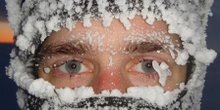South Georgia and the South Sandwich Islands
After some hard labour at Signy, it has been back on the ship and onto South Georgia, leaving the icebergs behind. The first stop was to the smallest year-round BAS base on Bird Island. This lies off the north of the main bulk of South Georgia and is an important site, since the main island is overrun with rats introduced on the whaling ships. These cause havoc with the ground-nesting birds such as the albatrosses and petrels, such that Bird Island is now a major refuge for a wide variety of bird species.
No photos can recreate quite how special this place is, the approach in one of the fast small boats off the Shackleton is incredible. The water is alive with fur seals everywhere and the air is filled with huge flying creatures, the cliffs that rise to form the backdrop give the impression akin to the approach to Jurassic Park. As for the smell of guano and hormonal fur seals ....
No photos can recreate quite how special this place is, the approach in one of the fast small boats off the Shackleton is incredible. The water is alive with fur seals everywhere and the air is filled with huge flying creatures, the cliffs that rise to form the backdrop give the impression akin to the approach to Jurassic Park. As for the smell of guano and hormonal fur seals ....
The Base at Bird Island

The photo demonstrates well the beach covered in fur seals. They are all fiercely territorial, either on the beach or the thick tussock grass that covers the island behind which they seem to hide. Bites are not uncommon with a high risk of subsequent infection since they carry as yet un-characterised bacteria at high levels in their mouths. The only tactics to avoid an assault are to walk up the streams and dissuade the more aggressive with a tickle of their whiskers using a long stick. Not everyone got away problem free.
Bird Island with Wandering Albatrosses

It was a busy day for me, as unfortunately our dentist has had to return home, I spent the day doing basic dental check-ups for those in between two winters in case their is a problem with a dentist getting in later in the season. There was however, time to walk a small way up the island to see some of the nesting birds including the enormous Wandering Albatross pairs which way up to 12 kg and have a wingspan of nearly 3 metres (see previous photo).
Nesting Wandering Albatross

After an exhausting twelve hours on the island it was an overnight sail to the base at King Edward Point (KEP), on South Georgia. This is the only inhabited bit of the island and lies next to Grytviken, a former Norwegian whaling station and famously the site where Shackleton finally made contact with civilisation again on his ill-fated trans-Antarctic expedition. Apart from a permanent BAS presence involved in fisheries research for the South Georgia Government (an overseas territory of the UK), there are a few museum staff for the whaling museum- as there are almost daily cruise ships- along with a government officer, who oversees the cruise and fishing ships.
Grytviken (Mount Hodges in the background and elephant seals to the fore)

Shackleton, as a great self-publicist and adventurer, reminds me in many ways of Cecil Rhodes, whom I have always admired if for nothing else his choice of location of his grave in the Matopos, outside Bulawayo in Zimbabwe. Shackleton similarly is buried in one of the most incredible spots on earth, for South Georgia with its wildlife, glacial mountains, icebergs and bays exceeds all superlatives.
The Obverse to Ernest Shackleton's Grave

Again, after a morning of work mainly with supplies and science equipment for the base, there was an opportunity to explore more of the island. It also provided me with a chance to catch up with Melanie, one of the other doctors with whom I have spent the last six months training and will be spending the year working at KEP. She took me over to Maivyken, as you can see despite the glaciers and penguins, it was more than warm enough for shorts and t-shirts.
The Road to Maivyken

Along with more fur seals there were more penguin species to admire. The Gentoo penguins are sub-Antarctic penguins and are populace on South Georgia along with the Falklands. Though not predated upon by the fur seals with whom they nest in close proximity, they do tend to be menaced by them.
Gentoo Penguins


The distribution of King Penguins on the other hand extends down the Antarctic peninsula, they are different however from the Emperor Penguins by their smaller size (up to one metre tall) and the distinct yellow-orange patches on the side of their head, which meets underneath the chin. Again South Georgia forms a major breeding ground for these penguins. As for the Emperors, they are true Antarctic penguins and a colony lies close to Halley, which provides a special opportunity to see them.
King Penguin with Rusting Whalers at Grytviken

A day was not nearly long enough but it is a great privilege to visit, let alone work in such a place. As we left, I did wonder what an unique place South Georgia would have been to spend a year as a doctor. As for my journey now and with no real regrets, we sail on; I have spent nearly two months on the ship but the cold one is now not far away.



